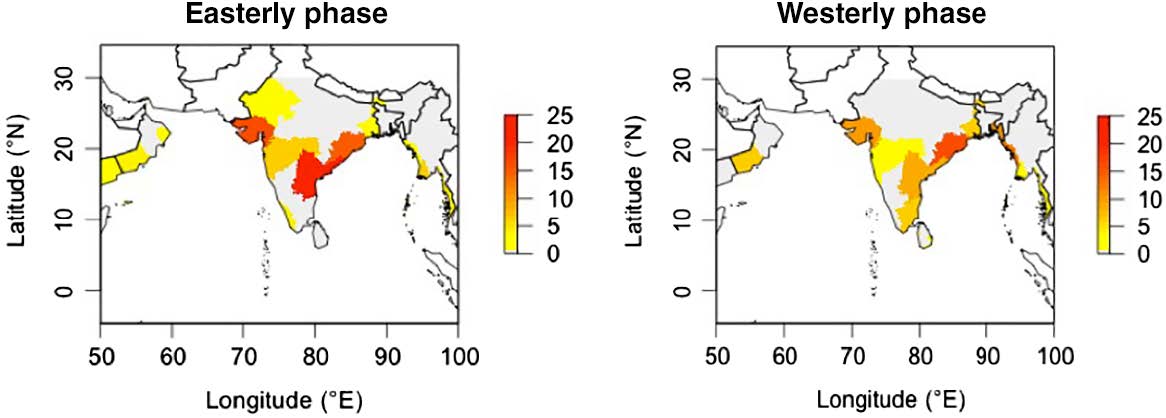Wahiduzzaman, M., E. C. J. Oliver, P. J. Klotzbach, S. J. Wotherspoon, N. J. Holbrook, : A Statistical Seasonal Forecast Model of North Indian Ocean Tropical Cyclones using the Quasi-Biennial Oscillation. International Journal of Climatology, 39, 934-952 , https://doi.org/10.1002/joc.5853
Key Points
Abstract
Previous studies have shown that the skill of seasonal forecasts of tropical cyclone (TC) activity over the North Indian Ocean (NIO) tends to be poor. This paper investigates the forecast potential of TC formation, trajectories and points of landfall in the NIO region using an index of the stratospheric quasi-biennial oscillation (QBO) as the predictor variable in a new statistical seasonal forecast model. Genesis was modelled by kernel density estimation, tracks were fitted using a generalized additive model (GAM) approach with an Euler integration step, and landfall location was estimated using a country mask. The model was trained on 30 years of TC observations (1980–2009) from the Joint Typhoon Warning Center and the QBO index at lags from 0 to 6 months. Over this time period, and within each season and QBO phase, the kernel density estimator modelled the distribution of genesis points, and the cyclone trajectories were then fit by the GAM along the observed cyclone tracks as smooth functions of location. Trajectories were simulated from randomly selected genesis points in the kernel density estimates. Ensembles of cyclone paths were traced, taking account of random innovations every 6-hr along the GAM-fitted velocity fields, to determine the points of landfall. Lead–lag analysis was used to assess the best predictor timescales for TC forecast potential. We found that the best model utilized the QBO index with a 3-month lead. Two hindcast validation methods were applied. First, leave-one-out cross-validation was performed where the country of landfall was decided by the majority vote of the simulated tracks. Second, the distances between the landfall locations in the observations and simulations were calculated. Application of seasonal forecast analysis further indicated that including information on the state of the QBO has the potential to improve the skill of TC seasonal forecasts in the NIO region.
Key Figure
FIG. 7. Probabilities of TC landfall (%) by model simulation across the NIO rim states for both QBO phases. Grey indicates that no landfalls are simulated.
Acknowledgments
We would like to sincerely thank the anonymous reviewers for their insightful comments that helped us to significantly improve the quality of this manuscript. M.W. was supported by a Tasmania Graduate Research Scholarship (TGRS) for this PhD research undertaken at the University of Tasmania, Hobart, Tasmania, Australia. P.J.K. by a grant from the G. Unger Vetlesen Foundation and N.J.H. by funding from CE170100023.
